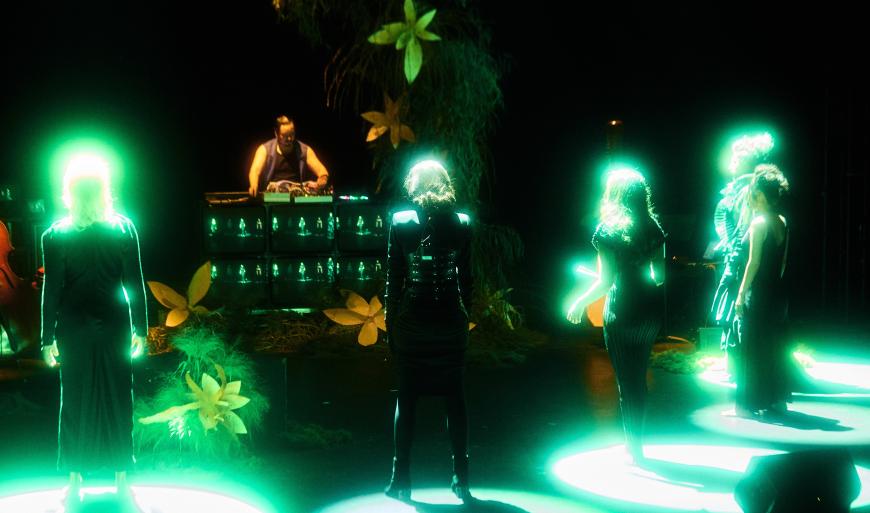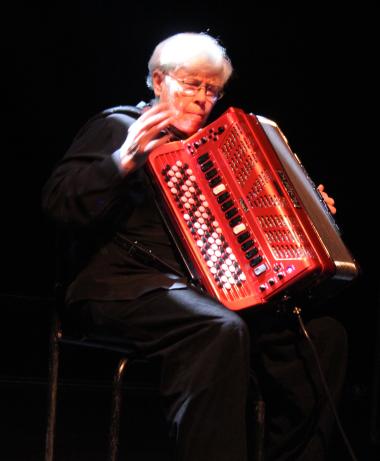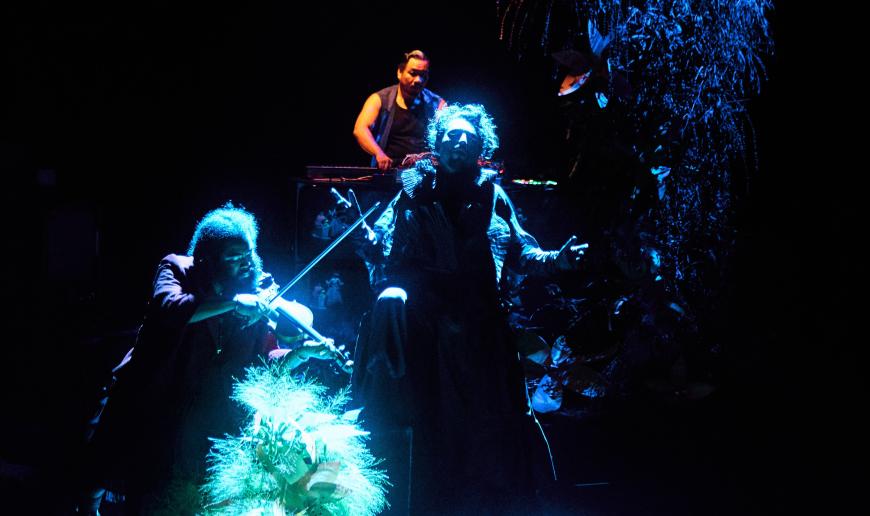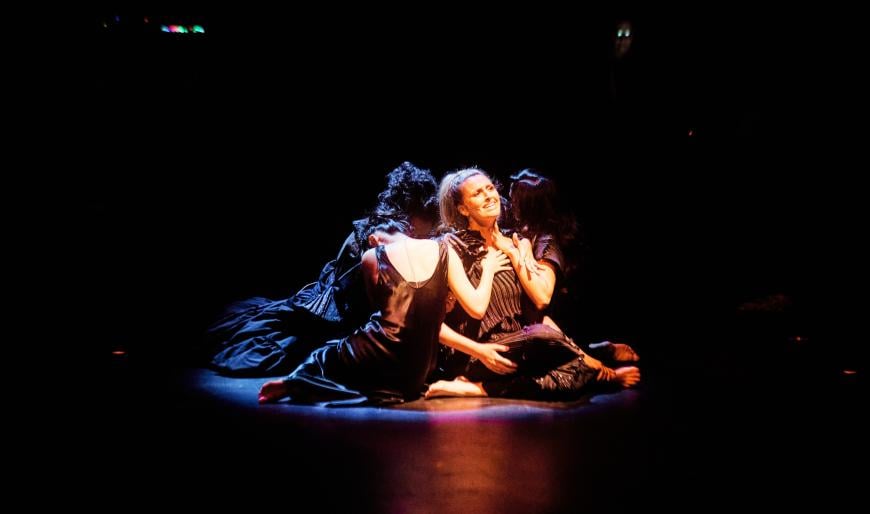
More psychedelic homage than precise retrospective, Bye Bye Butterfly, Long Beach Opera’s (LBO) mind trip of a production, celebrated the pioneering spirit and music of West Coast iconoclast Pauline Oliveros. At the same time, LBO played fast and loose with the “real thing.”
The first of two performances took place Saturday at the Los Angeles Theater Center — a multistage venue in a converted bank building on Spring Street that opened in 2007. The conversion was one of the early steps in the downtown Los Angeles renaissance. Owned by the city, the venue is currently managed by the Latino Theater Company, which played a major role in this production.

Born in Houston, Texas, on May 30, 1932, Oliveros was a significant contributor to the Bay Area experimental music scene of the early 1960s as a performer, composer, and faculty member at Mills College. In 1962, she co-founded the San Francisco Tape Music Center with fellow composers Morton Subotnick and Ramon Sender. She was also close friends with composers Robert Erickson and Terry Riley, among many others.
The creator of an aesthetic she termed “deep listening,” Oliveros combined improvisation, electronic music, ritual, and meditation with vocalization and diverse instrumentation in her work, often performing and recording with her Deep Listening Band in unusual, reverberant spaces, such as caves and cisterns. Her own instrument of choice was the accordion, which she began playing at the age of 9. A devoted follower of John Cage, she advanced the idea that all sound was relevant and urged a relationship between performers and audiences that she described as “sonic meditation.” Her nontraditional notation systems were sometimes designed to mirror the geometry of a mandala.
An unabashed lesbian (whose nickname was Buster), Oliveros was charming in performance, almost puckish, never glitzy or flashy. In this regard, it’s uncertain what she would have made of LBO’s midsummer night’s fever-dream reimagining of six of her compositions: “Out of the Dark” (1998), “God Dog” (1989), “Bye Bye Butterfly” (1965), “Rattlesnake Mountain” (1982),
“Tumbling Song” (1971), and “Teach Yourself to Fly” (1971).
Termed an “operatic experiment,” the production was conceived by music director Darian Donovan Thomas (making his LBO debut), director and designer McCall Cadenas, visual designer Juan Renteria, costume designer Ilaria Deplano, hair and makeup designer Gilbert Moran, lighting designer Pablo Santiago, sound designer Carlos Mosquera, and a cast of five singers and four instrumentalists (Thomas on violin, Shelley Burgon on harp, Marlon Martinez on bass, and Marta Tiesenga on winds and hurdy-gurdy, plus Phong Tran on electronics).

Viewed entirely on its own, LBO’s production was unquestionably a dynamic experience that melded dazzling staging, sensuous choreography, a Fillmore East-style light show, and an array of the most flamboyant costumes — imagine The Magic Flute meets A Clockwork Orange. The superb vocal ensemble combined glistening harmonies with punkish razzle-dazzle arias chosen by the singers, who were matched in their virtuosity by the instrumentalists.
It all seemed to be a backward way to celebrate Oliveros, however, because her performance style was exactly the opposite. This production’s creators declined to add into the show many of the aesthetic principles and practices that were unique to Oliveros and influential in experimental music.
As the title implies, “Out of the Dark” began in darkness and expanded into a soundscape as the singers and instrumentalists intoned the note D then drifted away from it by changing pitch and rhythm and adding harmony. The tonal and microtonal pitch field intensified impressively.

From this point, harmonic subtleties gave way to ever increasing flamboyance. A projected shadow dancer moved sinuously to the sonic layering of “God Dog.” Then, soprano Laurel Irene made her entrance as a dominatrix Queen of the Night, belting out a wild, kinky, totally incongruous rendition of “Der Hölle Rache.” This star turn was matched by a local Latin torch song from Renteria (aka “el Creativo”), a heartthrob who came with a screaming cadre of adoring female fans. Kathryn Shuman, Leela Subramaniam, and Habin Kim completed the vocal ensemble.
There were times when the music reached almost unbearable levels of volume and intensity, especially during the performance of Oliveros’s mini-opera “Bye Bye Butterfly.” Thankfully, Thomas was savvy enough as music director to know when a lot was too much, and he hit the brakes. As Tran adjusted the electronics mid-performance, a pyramid of video screens created a background matrix of glowing images (designed by Evan Morris). Oddly, a major element in Oliveros’s “Butterfly” is the incorporation of a record playing an aria from Puccini’s Madama Butterfly. If it was there, I couldn’t hear it.

Several other signature Oliveros elements were missing, most notably the sound of an accordion and any attempt at direct connection with the audience — heavily missed in the final performance of “Teach Yourself to Fly,” a piece famous for its audience participation.
Whether this show was the best way to honor Oliveros is debatable. But it was unquestionably a memorable theatrical experience.
It should be noted that Bye Bye Butterfly was created as a replacement for LBO’s previously scheduled production of Asunción, which was to be directed by Cadenas and pop chanteuse San Cha, inspired by San Cha’s 2019 album La Luz de la Esperanza. No dates for a future production have been announced.




